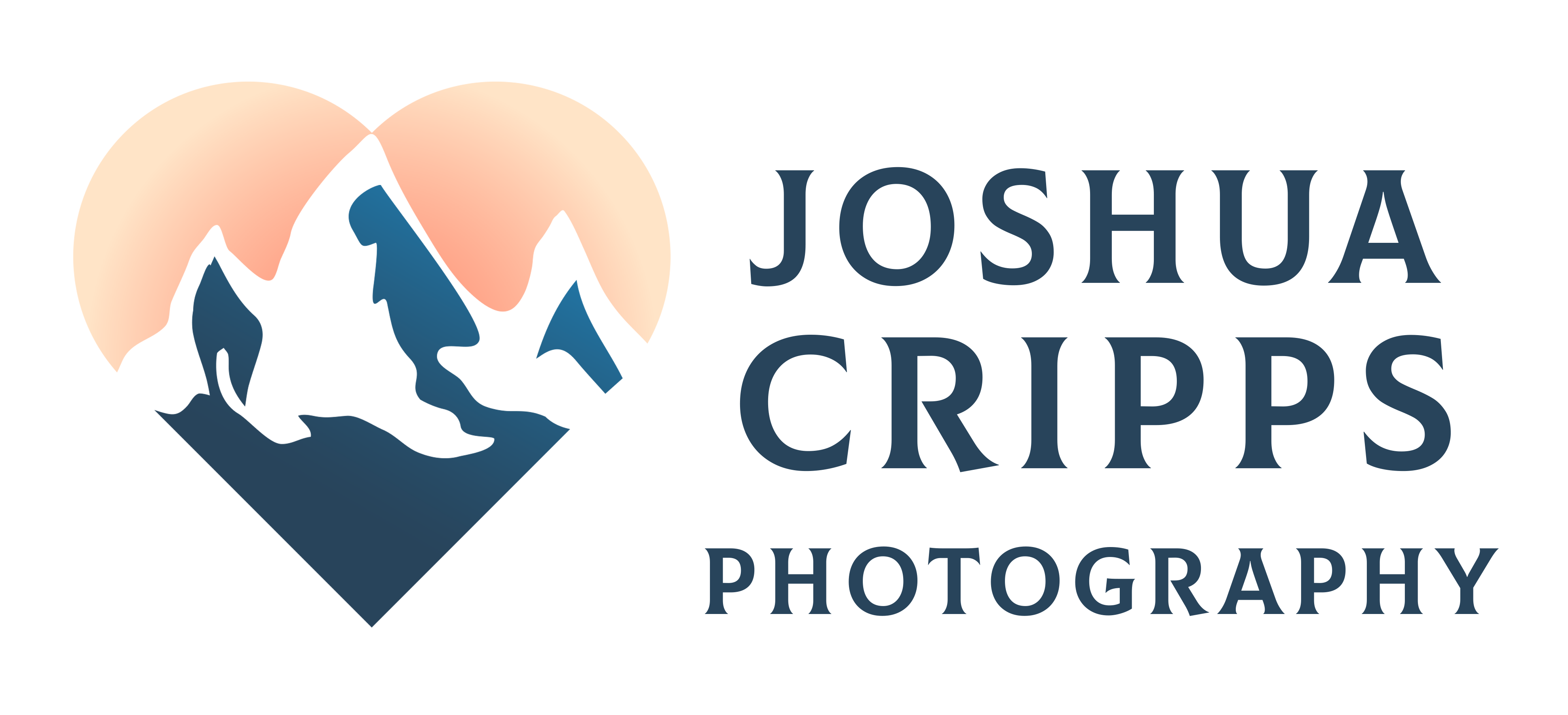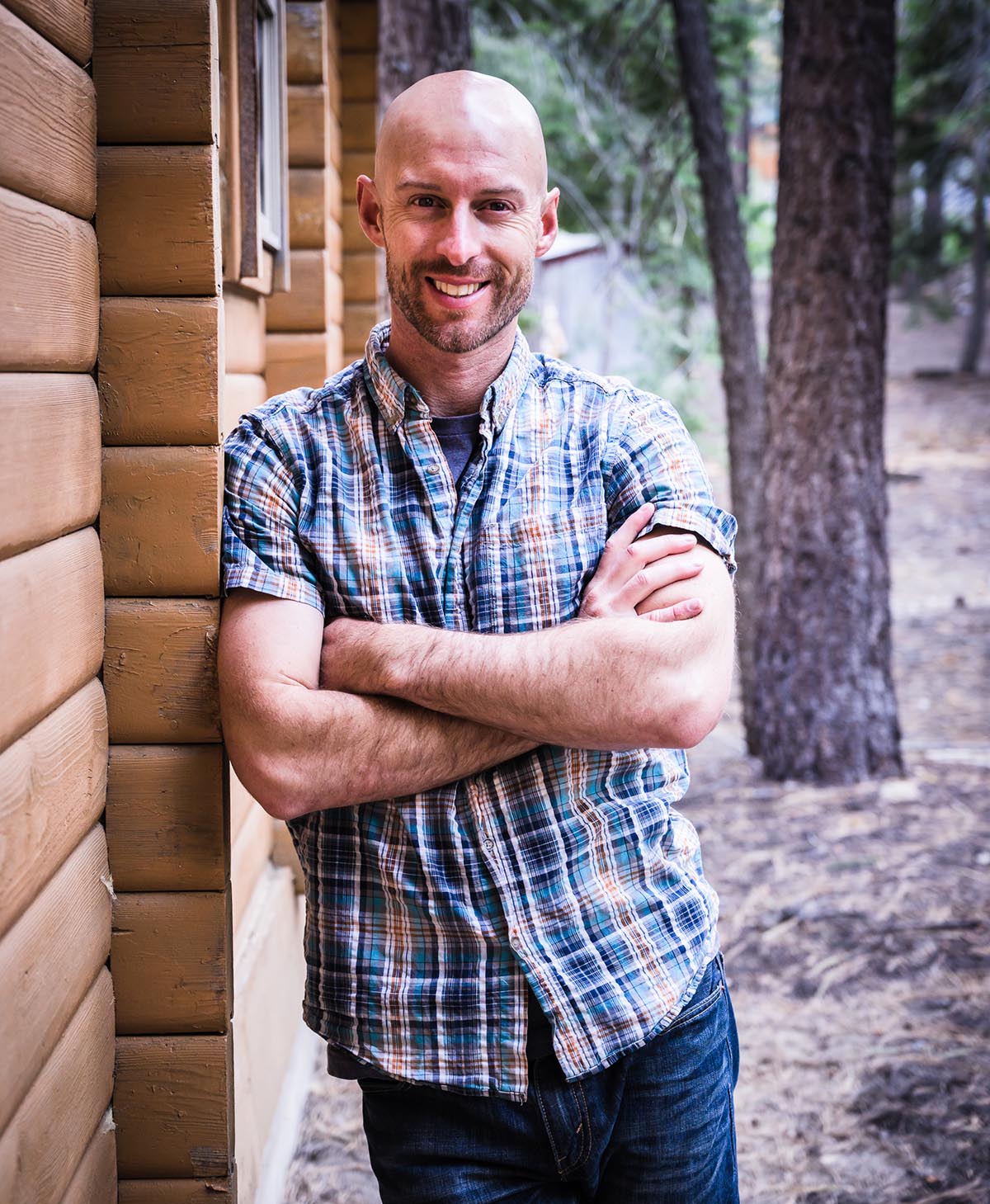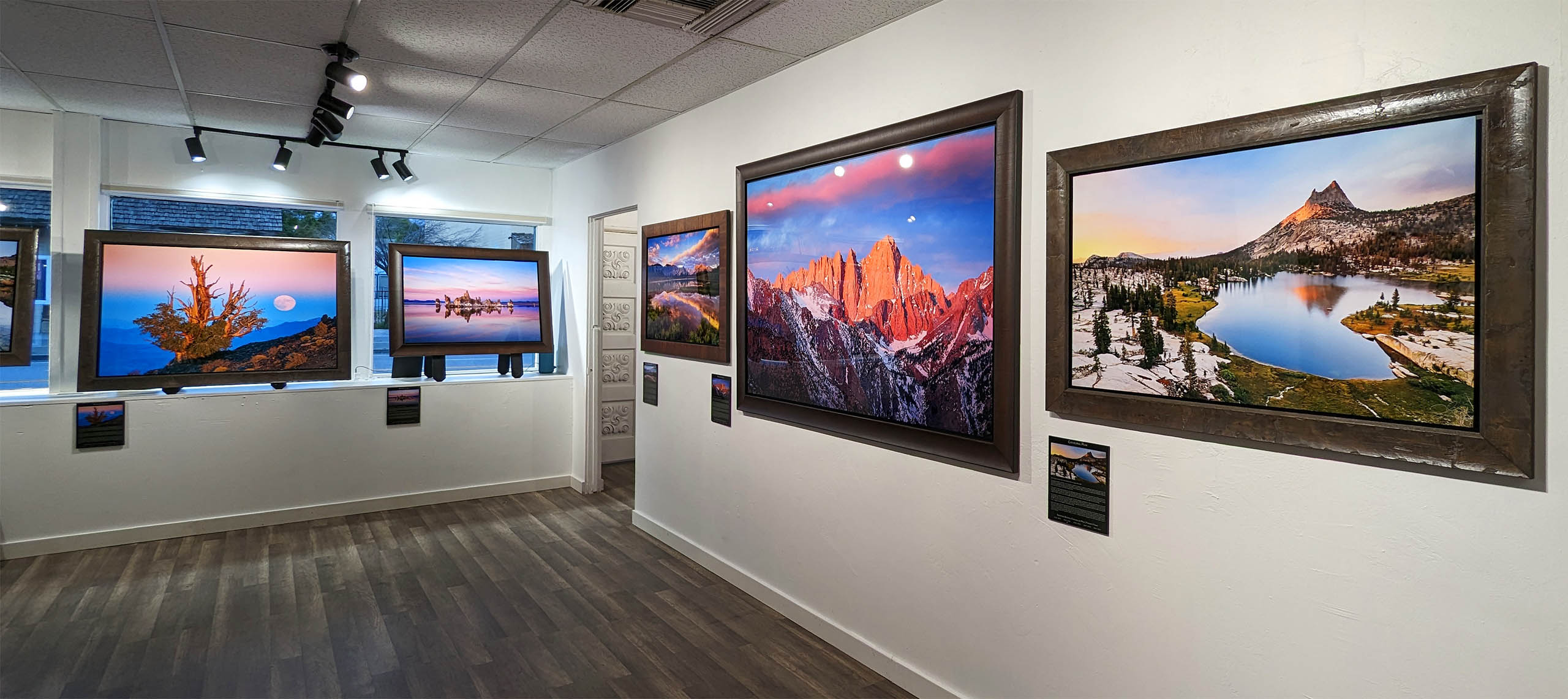Joshua Cripps
Photographing the Full Moon Over California’s 2nd Tallest Mountain
- No Comments
Heyo. So today is the full moon. It’s June 5th and I’m actually supposed to be in a place called Independence, California lining up a full moon photograph. That’s about a two hour drive from here. Instead, I’m up at Mono Lake having a great time shooting the sunset. And the last time that I was down in this place called, uh, actually is called Kearsarge. The place that I’m actually going to be doing the full moon shoot. I got completely shut down. I can’t shoot from here. It isn’t going according to my plan! Biscuits and gravy, I’m struggling a little bit. This isn’t going to work getting shut down. There’s a little bit of a problem left and right out here, it’s just not going to happen. The moon is not going to align there. It’s going to be way over here, son of a frickin burrito. Ah, I tried three different ways to line this shot up and I got absolutely smacked to the ground each time: I just couldn’t make it happen.
But while I was there, I took the time because sometimes, you know, all the planning in the world won’t help you until you actually get out in the field and see if the boat is going to line up or not. In that case, it didn’t line up. But I was able to see in those moments that today, well actually tomorrow morning, June 6th, the shot that I had in my mind is actually possible. And I am super excited to see if I can pull it off. If you guys follow me on Instagram or on my newsletter, you know that I love shooting. The full moon is one of the most satisfying and challenging technical, creative, artistic pursuits that I’ve discovered so far in nature photography and every good moon photograph starts with an idea. And it starts with a vision of how you want to see the moon appear in the world.
Do you want to see it over a mountain? Do you want to see it rising over a two foot tower? Do you want to see it setting over the empire state building? You have to start with that idea and then everything flows downhill from that. So for this photo, my idea, there are a lot of tall mountains in California. We have some of the tallest in the contiguous us, and one of them is called Mount Williamson. It’s actually the second tallest mountain in California. It’s 14,293 feet or something like that. And then just past Mount Williamson, there’s another mountain called Mount Tindall, which is also fourteener. And it looks a lot, a lot, a lot, a lot like Mount Whitney, it’s got the same kind of pinnacles, the same beautiful flat East face, and then the broad Western slope going down the backside. And I thought, how cool would it be to see the moon setting right in between those two?
Fourteeners the only thing is the angle that you have to be at in order to actually see that is very far North looking back to the South. So the only time it turns out that that’s possible do is in June. Now, why is that? So if you’re not aware of this, what happens is the full moon always appears in the sky directly opposite the sun. So as you go farther and farther here in the Northern hemisphere, as you go farther and farther into the summer, the sun gets farther North in the sky, right? Which means that the moon, the full moon will be setting farther and farther South. Whereas in the winter time, as the sun goes farther and farther, South, the full moon sets farther and farther to the North. So that means if you have a specific idea for photo in mind, but the moon only lines up at a certain time at a certain angle, you can think about where the sun’s going to be, and that will help you figure out where the moon is going to be for that season.
So in June, we’re approaching the June solstice, right? The sun is the farthest North. It’s going to be in about two more weeks, which means the moon is the farthest South it’s ever going to appear as a full moon, which means that for this specific alignment, even though I could shoot the moon setting over Williamson at all different times of the year, it’s always going to be from a different angle. The only way that I can get it dropping into the slot between Williamson and Tyndall is now in June. So that’s the idea that I had. That’s where this photo started from. And I should be down there right now, lining up, doing the final kind of lineup with the mountains, things like that. But I, I’m not. I’m about two hours North at mono Lake, and we’ve had thunderstorms, these beautiful thunderstorms all week. The sky is absolutely freaking gorgeous out right now. It is just too fun to be out here. So I’m going to do the shoot here. You can see there’s this core jus light on the trees, just this beautiful, warm light cascading across the mountain. So I’m out here just roaming around, seeing what I could find. I got no destination fine, but after the sunset I got to get in the car, I’m going to high tail it. I’m going to book it down to Kearsarge because this full moon Bodo is waiting for me.
Well, sunset’s starting to wind down a little bit, starting to cool off as well. I’ve had to put my hoodie on here, but uh, Oh my God, it smells unbelievable out here. I don’t know if you guys know this or not. Well, I’m having some really serious wardrobe issues right here. If you’ve ever shaved your head, you know what happens is you get like Velcro. It’s like head Velcro. You can barely put your freaking clothes on. Cause everything just sticks to it. Anyway, if you guys have never had a chance to go into a Jeffrey pine forest in the summertime, I highly recommend it because it smells like butterscotch and I’m not teasing you. I’m not kidding at all. So if you find a Jeffery tree, hold on a second, Like this guy, this beautiful tree right here, and you stick your nose deep inside. I don’t know if this one’s going to be the perfect example, cause it’s all burned out on the outside.
Actually smells pretty. Dang good, smells like butterscotch. So that is reason alone to go to a Jeffrey pine forest, at least once in your life to stick your nose inside a tree. Anyway, let’s talk more about the plan. How do you actually set up a moonshot? Once you have the idea in your mind, how do you know where to stand? How do you know what to shoot and all that sort of stuff? And this can actually be a pretty complicated in-depth process. I’ll go over it really quickly with you guys. How I do it. I’m a pretty systematic guy. So I like to have kind of a four step process. And the first thing that I look for is the timing. I’m always trying to time my moonshots so that I also have a light on the landscape, which makes my exposure a lot easier to manage.
And I really love to do this around sunrise. If I’m shooting the moon set or around sunset, if I’m shooting the moon rise now for the shot in this blog, I’m going for a moon set shot at sunrise. So first thing I do is I just look and see what time the sunrise is. And it’s like 5:35 AM. So basically that means I’m trying to get to a spot where the mood is going to disappear behind that mountain. The thing that I’m looking to shoot around five 35 or a little bit after a little bit before, just so that there’s relatively nice light on the landscape and you can get the details of the moon and the landscape in a single shot. So when you’re shooting something like a big 14,000 foot mountain, the closer you get to that mountain, the higher you look up into the sky, which means that the earlier the moon is going to disappear behind that mountain.
And so the first thing that I typically do is I just drop a pin in PhotoPills. I drop a black pin on the top of the mountain and I drop a red pin just roughly on a guesstimated shooting location. And I see what time the moon is going to disappear behind the mountain. From that vantage point, if the moon disappears behind the mountain too early from that spot, I basically have two options. The first one is I need to go farther and farther to the East because the more that you back up, the more that your local horizon drops and the later the moon is going to disappear behind the mountain, giving you a little bit more buffer for the sun to get in place and light everything up. But even if you back up all the way, as far as you can, and the moon is still going to disappear before the sun rises.
That means you basically just got to come back the next day when the moon sets about 45 minutes later. And that’s actually what the plan is for this shot. The full moon was on the fifth, but I’m doing a shot on the sixth because the timing works out a little bit better. So that gives me the linear distance that I need to be from my subject to get the timing that I want. The next thing that you have to pay attention to is the asthma angle, which is how far the moon is around the compass, as well as the elevation angle for that moment in time. And these are both pretty easy numbers to figure out because PhotoPills gives them to you. You can see something like this at five 35, a M PhotoPills tells you exactly where in the sky the moon is going to be.
And if you have those numbers, you know how high up it’s going to be? You know exactly what angle it’s going to be. All you have to do is get yourself and your cute little camera to the GPS location that matches those things up. So from this spot, which I know that I’m going to see the moon setting behind the mountain right around sunrise. I could say that the angular distance between me and the top of the mountain is 6.6 degrees roughly. And so that means that my alignment is going to happen when the moon is also 6.6 degrees up into the sky and using PhotoPills. I can see that when the moon is 6.6 degrees up in the sky, it’s at an azimuth angle of, let me look it up about 234 degrees around the compass, which means that I just need to get into a position where I am 234 degrees around the compass from my subject.
So I just put together those couple of pieces of information and I drop a pin on planet earth. And that tells me exactly where I need to go. And I find myself in a spot like this, ready to shoot. I got all my equipment ready. I’ve got my plan. I’ve got my idea. At this point. My part of the process is really done. There’s nothing else to do except to go to sleep in the back of my car and to wake up early in the morning and to see if the moon and the weather all cooperate with my plan
And we’re looking out pretty good this morning. We’ve got a gorgeous sunrise happening up here to the South, got a nice kind of Sierra wave cloud going on over the crest. The moon is just setting into a little bit of a bank of clouds there above Mount Tindall, but I’m hoping that it’ll still pop out here and there. Now, the reason that I came to this location, as I said, when I was talking about the plan is the timing the sun will be coming up in just a couple of minutes and it should paint a little bit of light over the Sierra crest just before the moon disappears from view. So we’re going to have that really awesome combination of the moon with the sunrise light, and maybe we’ll even get a little bit of a pink up in the clouds up there. Now I got the cameras all set up over here behind me and they’re just shooting automatically.
So I can just kind of run around and be free at the moment, which is great because usually when I’m doing moon photography, the last few minutes are just a frantic scramble because I’m not quite in the right spot or I’ve slept in too long and I’m screeching down the dirt roads to try to get to a location. But this morning, everything kind of came together pretty easily and more cleanly. And the alignment works better than I expected it to. And in terms of the gear here, I’ve got my Nikon, [inaudible] attached to the knee core 200 to 500. And the reason that I love using that setup is the combination of the inbuilt camera stabilization. Plus the lens stabilization helps me get a really, really sharp shot when I’m extended out, you know, to these high millimeters, like three 50 or 400 to 500. And I’m using a ball head here from Colorado tripod company because it’s got an incredible amount of locking force.
So it really holds this whole setup incredibly still. And for the same reason, I actually use VR, even though I’m on the tripod because I don’t want any little bit of wind or my hand motion or whatever to cause vibrations within the camera. And I’m also of course, using exposure delay so that, you know, after I press the shutter button here, it takes three seconds for the camera to actually make an exposure. And I typically like to set up two compositions if I can, one with my super long telephoto waiting for the moon to drop from the place. And then I’ve also got a wider time-lapse going on at the same time. It just gives me a couple of different options of things to shoot and compositions to use later.
All right. So I got good news and I got bad news. The good news. It’s a beautiful morning out here. The bad news is clouds. Ah, man, this is the bane of my existence as a mood photographer. There’s always a fricking bake of clouds over this year, a crest and it snuffs the moon out at the last minute, every single time. And that’s exactly what happened today as well. The light is just starting to bathe this mountain range here, but the moon dropped behind some clouds and you can’t see it anymore. So that ha it’s frustrating. I’m not going to lie. It is a challenge to come out here to put in all the hard work, to drive down to these locations, to sleep more or less uncomfortably in the back of my car and wake up ass early to then have the shot, not pan out.
And to know that well, you might be able to shoot it again another time. Maybe I’ll have to check the alignment for July to see if the sun is still high enough in the sky to put moon in the right location down here. And if it’s not, that means I actually have to wait until next June. I have to wait a full year in order to be able to try to take this photo in the alignment that I want. Now I did get the moon as it was dropping into a little clear section of cloud above the mountains. And I’ll show you that photo. It’s the best that I’ve got from the morning, but it’s not what early what I had in mind. The light is not on the mountains. It’s not dynamic. There is very little definition in the mountains. They’re basically just uniformly lit without any, uh, there’s no shadow detail.
There’s no highlight detail. It’s just this flat gray mountain with the moon sitting up above it. And this is why the PhotoPills guys always say plan and pray. There’s only so much that you can do. You can be absolutely meticulous, but mama nature has to come and meet you and the rest of the way. So that’s going to do it for me in this video. I really appreciate you guys watching. If you like this, please comment and subscribe and give it a thumbs up and share with your friends and all that great YouTube stuff. It really, really helps me grow the channel and keep making videos. And until next time have fun on your own moon chasing have fun and happy shooting.
Be sure to subscribe to my newsletter and YouTube channel for even more landscape photography how-to.



